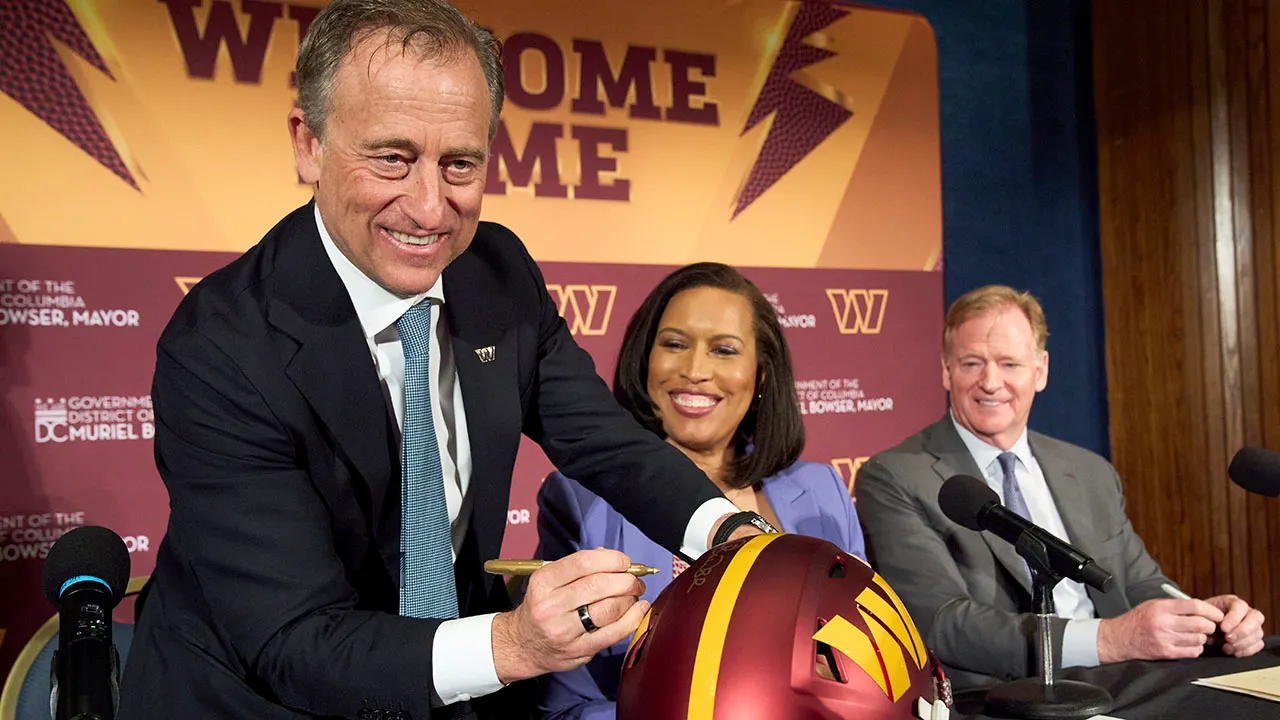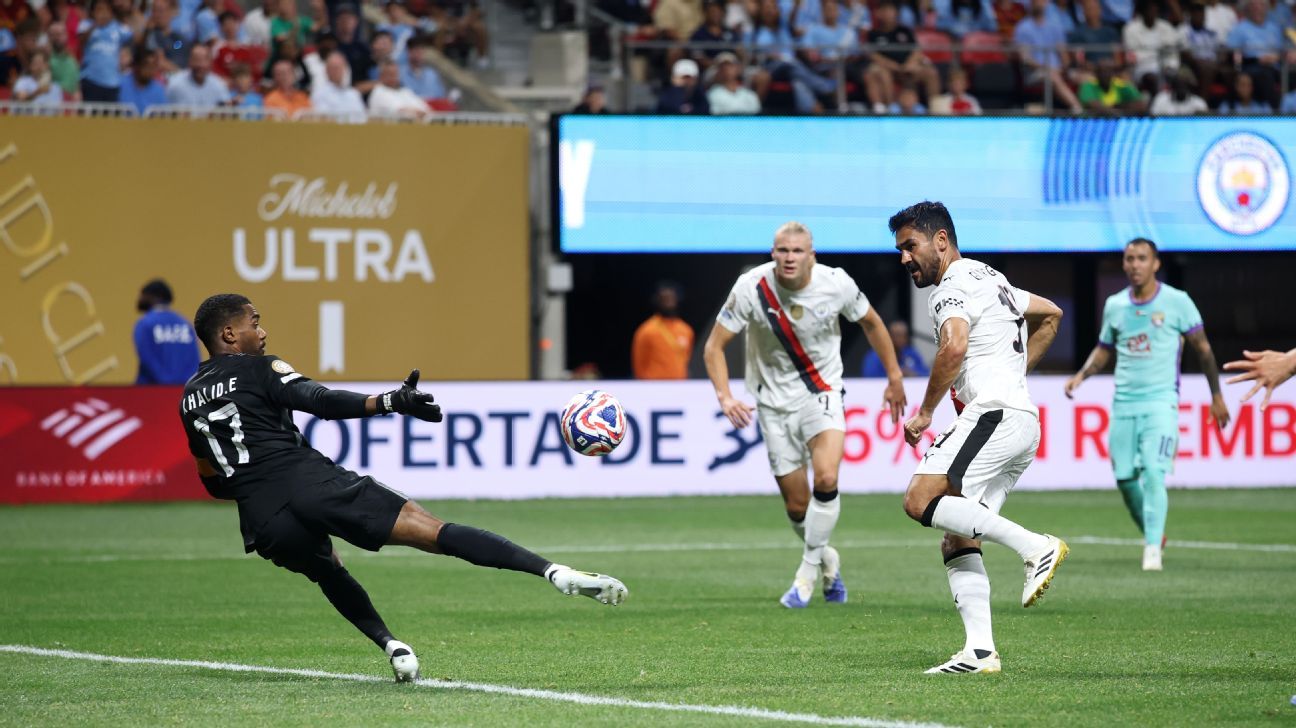PITTSBURGH — As Aaron Rodgers asserted he “wasn’t holding anyone hostage,” the Pittsburgh Steelers’ refrain of the spring was that they were going to conduct their offseason business independent of Rodgers’ decision.
Yet neither’s actions matched their words.
As Rodgers dealt with what he called “difficult stuff” for members of his inner circle, attended a Kentucky Derby party and hung out with friend and rapper Mike. at a couple of his concerts, the Steelers bypassed nearly every quarterback option before drafting Will Howard in the sixth round. They also opted to sign Mason Rudolph as their lone true veteran quarterback to join an inexperienced Skylar Thompson at the position.
Though one of coach Mike Tomlin’s many creeds is wanting his players to be “volunteers, not hostages,” the Steelers all but volunteered to be Rodgers’ hostage by putting all of their eggs in his basket. With the draft over, a desolate free agent quarterback market and few trade options, Rodgers is the Steelers’ last best hope. And yet, on paper and on the field, Rodgers doesn’t appear to be a fit for the Steelers’ offense or its longstanding organizational philosophies, leaving the franchise hurtling toward an identity crisis.
Tomlin doubled down on the importance of being a run-first team when he hired offensive Arthur Smith a year ago, but on Friday the Steelers are expected to agree to a deal with Rodgers, who attempted the second-most passes in the NFL last season.
Tomlin also repeatedly emphasized mobility as a coveted quarterback trait, yet his new signal-caller took 40 sacks and rushed 34 times for 94 yards last season.
And general manager Omar Khan orchestrated a blockbuster trade to acquire premier deep threat DK Metcalf on the eve of free agency and signed him to an unprecedented extension, yet now has agreed to terms with a quarterback who averaged 6.6 air yards per attempt last season, ranking 32nd out of 36 qualified signal-callers.
“The way we ended [the season] was unacceptable,” Khan said at the NFL combine. “We know we have to be better, and people expect better. We expect better, and that can’t happen again. And I’m just as disappointed as everyone else, and I can tell you we’re working hard to fix that and make sure it doesn’t happen again.”
The Steelers entered the offseason promising change after a five-game losing streak to end a regular season that began with a 10-3 record through 14 weeks. And while Rodgers, poised to be the team’s fifth different Week 1 starting quarterback in as many years, is a change, it’s not necessarily one in concert with their intended offensive identity.
Rodgers’ acquisition marks the second time in as many years the Steelers have taken a swing on a reclamation project. Like 36-year-old Russell Wilson before him, Rodgers, 41, was released before the end of his contract by the New York Jets, who once gave up a king’s ransom in hopes he would reinvigorate their franchise.
This is the hand the Steelers dealt themselves by not re-signing Justin Fields, their onetime quarterback who left for the Jets and a modest contract — his $20 million average annual value is the lowest among all projected starting quarterbacks not playing on a rookie deal — and a fresh start.
The Steelers earned Rodgers’ long-awaited final rose after the Giants signed Wilson and Minnesota committed to 2024 first-round pick J.J. McCarthy as its starting quarterback. Pittsburgh then landed Rodgers after a tedious internal tug-of-war between Rodgers’ desire to keep playing or to retire. At this point in his career, though, Rodgers comes with more thorns than petals.
As a four-time NFL MVP, 10-time Pro Bowler and Super Bowl champion — in a win over Tomlin’s Steelers — Rodgers is an undeniable future Hall of Famer. But after two decades in the NFL and an Achilles rupture that cost him the 2023 season and a triumphant second act in New York, Rodgers enters Pittsburgh as a shadow of the quarterback who won back-to-back MVP awards in 2020 and 2021.
Since last earning the NFL’s highest individual honor, Rodgers’ performance has been in sharp decline. In 2022 and 2024, his past two seasons as a starter, he ranked 26th and 25th in QBR and 21st and 26th in yards per attempt.
Beyond being the ringmaster of New York’s off-field circus for the better part of two seasons, Rodgers’ on-field performance in his lone complete season as the starter declined from the gold standard set during his Green Bay career. Though Rodgers finished the season completing 63% of his attempts for 3,897 yards, 28 touchdowns and 11 interceptions, he posted a 48.0 QBR. His career low QBR as a complete-season starter was 41.3 in 2022. That year, his final season in Green Bay, he completed 64.6% of attempts for 3,695 yards, 26 touchdowns and 12 interceptions as the Packers went 8-9.
Perhaps the lowest point in a reel of Rodgers’ Jets-era lowlights came in a 40-14 Week 17 loss to the Buffalo Bills, when he recorded a career-worst 1.2 QBR, threw two interceptions and was sacked four times to surpass Tom Brady as the most-sacked quarterback in NFL history. By the time Rodgers benched himself with the Jets trailing 40-0 at the start of the fourth quarter, the offense had gone 14 straight possessions without a touchdown. The unit finally scored a touchdown — Rodgers’ 500th career TD strike — in the second quarter of an eventual regular-season finale win against the Dolphins in Rodgers’ last game as Jet.
The Steelers had similar offensive dry spells during 2024. They failed to score an opening-drive touchdown all season. From the start of the Week 11 win against the Baltimore Ravens (thanks to Chris Boswell’s field goals) until Wilson found receiver Calvin Austin for a 23-yard score late in the fourth quarter against the Cleveland Browns a week later, the Steelers went 20 offensive possessions — seven quarters — without a touchdown.
“It certainly needs to score more points,” Tomlin said of the offense in his season-ending news conference. “In whatever way that happens is whatever way that happens. It doesn’t necessarily mean construction, but we certainly got to score more points. You’re not going to score 14 points a week in January and be very successful.”
In a side-by-side comparison, Wilson’s strengths would seem to fit better with the Steelers’ offensive personnel.
Wilson averaged 7.6 yards per attempt in 2024, while Rodgers checked in at 6.7. Wilson also outperformed Rodgers when they weren’t pressured, per ESPN Research. Wilson completed 75% of attempts with 11 touchdowns and two interceptions for a QBR of 71. Rodgers completed 68% of attempts when he wasn’t pressured and threw 21 touchdowns to 10 interceptions for a QBR of 55. Rodgers’ 10 interceptions were his most not facing pressure since he threw 13 during his first year as a starter in 2008.
And although Rodgers wasn’t shy about letting it fly earlier in his career, he has been noticeably more conservative since the Achilles tear. He averaged 2.69 seconds to throw, fifth among qualified quarterbacks, last season, and his 6.6-yard average throw distance was the fifth shortest in the league. 2024 marked the only full season as a starter that he averaged a throw distance below 7.4 yards.
Rodgers also hasn’t been at the helm of prolific running offenses. The Jets ranked 28th in run plays last year, and from 2008 to 2022, the Packers ran on 37% of plays — the fourth-lowest rate in the league over that span, according to ESPN Research. Rodgers’ new offensive coordinator, Smith, however, has overseen top-five rushing offenses in five of his past six seasons as a playcaller.
But those are moot points, because while the Steelers waited for Rodgers’ decision, Wilson took matters into his own hands and scheduled visits with the Browns and Giants. A day after news spread of Wilson’s visits, the Steelers inked Rudolph, their 2018 third-round pick who spent the 2024 season in Tennessee, to a two-year, $8 million deal.
Some, like the Steelers, believe Rodgers has more upside than Wilson — or any other option available in weak quarterback free agency and draft classes. The Jets had a better red zone scoring percentage than the Steelers in 2024 — 54.55% to Pittsburgh’s 48.21%, the fourth lowest in the NFL.
“He played good, especially towards the end of the season,” said Steelers cornerback Brandin Echols, who played with Rodgers in New York last season. “I wish the outcome was a little better, but towards the end of the season he started to really wake up.”
The Steelers’ approach to free agency put the ball in Rodgers’ hands. Their best chance to avoid a potential offensive identity crisis is to hope he gives it back by playing within the construct of their offense.








